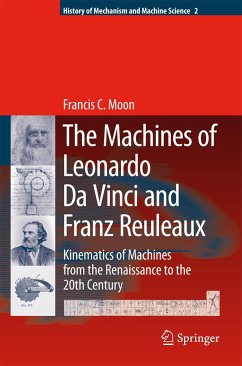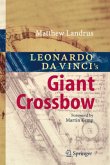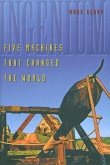Ah the Machine; both coveted and criticized, life sustaining and life destr- ing yet always a symbol of human creativity and invention from the Rena- sance to robotics from the Wright brothers to the Wankel engine. There are more than a billion mechanical machines in our world of six billion humans. These machines are the source of both marvel and mayhem in the life of our planet. This book is about the evolution of these machines and the inv- tors and engineers who created them from the early Renaissance to the early 20th century. I have chosen two personalities who are icons of these two machine ages, Leonardo da Vinci [1452-1519] and Franz Reuleaux [1829- 1905], recognizing both the cadre of machine designers who in?uenced them as well as those who were in?uenced by the accomplishments of these two engineers. A major thesis of this book is that the evolution of machine design methodology, from the intuitive methods of the workshop to the math-based, engineering science analysis and synthesis of modern industrial design, was of equal achievement as the creation of the marvelous machines themselves. In the past two decades there has been increasing interest in rational me- ods of design from topology and optimization theories to genetic algorithms. In the teaching of design at the novitiate level, the importance of design - cles and iteration is emphasized. Yet often the historical background for e- lution of machine design is minimal or missing.
From the reviews:
"The book has ... a brief introduction to Da Vinci and Reuleaux and their respective codification approaches, an extensive and accessible evaluation of machine designs and design methods as represented in 20 centuries of design manuals and 'theater of machines' books, a brief illustrated reference section on kinematic mechanism components, and an annotated bibliography of historic sources. The book can be used as either a reference or a course resource ... . Summing Up: Recommended. Upper-division undergraduates through faculty." (G. E. Herrick, CHOICE, Vol. 45 (5), January, 2008)
"This book ... focuses on two towering figures in the design of kinematic machines which are separated by some 300 years in history, Leonardo da Vinci and Franz Reuleaux. ... The compilation of the material is of course coloured by personal preferences but it is these preferences but it is these preferences which renders the book a highly interesting one. Many figures from the sources as well as photos of model mechanisms make the book a truly unique one." (Thomas Sonar, Zentralblatt MATH, Vol. 1139 (17), 2008)
"This is an interesting book, rich in information. ... At the end, just after Moon's detailed comparison of mechanisms as portrayed and described by Leonardo and Reuleaux, the book includes a dozen plates of Cornell's Reuleaux models. The main bibliography is very impressive ... . Moon hopes that engineering students ... will find stimulation in this book and gain a renewed respect for simple mechanisms and their role in design, and to help them he has included student exercises ... ." (Alexander G. Keller, Technology and Culture, Vol. 50, April, 2009)
"The book has ... a brief introduction to Da Vinci and Reuleaux and their respective codification approaches, an extensive and accessible evaluation of machine designs and design methods as represented in 20 centuries of design manuals and 'theater of machines' books, a brief illustrated reference section on kinematic mechanism components, and an annotated bibliography of historic sources. The book can be used as either a reference or a course resource ... . Summing Up: Recommended. Upper-division undergraduates through faculty." (G. E. Herrick, CHOICE, Vol. 45 (5), January, 2008)
"This book ... focuses on two towering figures in the design of kinematic machines which are separated by some 300 years in history, Leonardo da Vinci and Franz Reuleaux. ... The compilation of the material is of course coloured by personal preferences but it is these preferences but it is these preferences which renders the book a highly interesting one. Many figures from the sources as well as photos of model mechanisms make the book a truly unique one." (Thomas Sonar, Zentralblatt MATH, Vol. 1139 (17), 2008)
"This is an interesting book, rich in information. ... At the end, just after Moon's detailed comparison of mechanisms as portrayed and described by Leonardo and Reuleaux, the book includes a dozen plates of Cornell's Reuleaux models. The main bibliography is very impressive ... . Moon hopes that engineering students ... will find stimulation in this book and gain a renewed respect for simple mechanisms and their role in design, and to help them he has included student exercises ... ." (Alexander G. Keller, Technology and Culture, Vol. 50, April, 2009)








